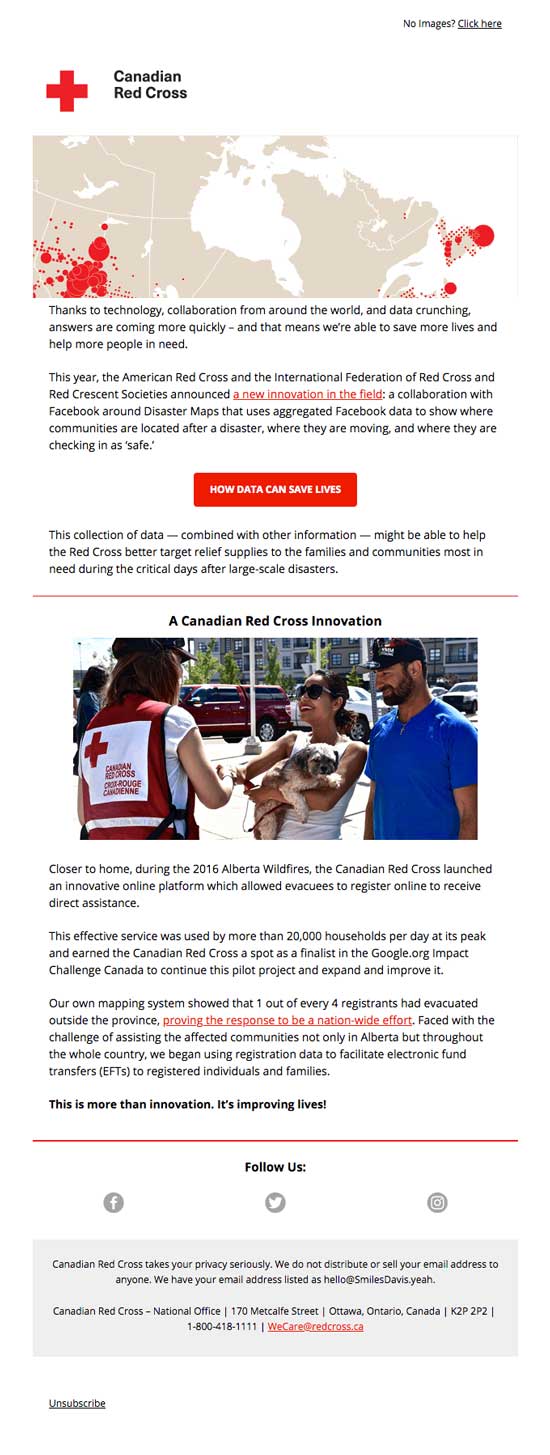The need to boost donor retention is necessary to keep your nonprofit organization up and running. This is one fact we can’t ignore.
Cultivating a strong and lasting relationship with donors proves valuable for nonprofit organizations in acquiring funds and creating a community of supporters.
There are several ways nonprofits can increase donor retention and one of those is by optimizing the power of email marketing automation. But before we delve deeper into how you can implement automated welcome emails, let’s first run through on the foundational pieces.

Email marketing is critical to the success of nonprofit fundraising.
Given its effectiveness in generating ROI, email marketing is an important channel of communication for nonprofits to connect and engage with donors and supporters. In contrast to other channels, email marketing is inexpensive, and more and more donors are growing comfortable with completing donations online.
Communication is of high importance for nonprofits. Email marketing lets your organization thank donors, entice more volunteers to join, and spread your mission to a wider audience with ease through tailored, auto-generated emails. This way, you can focus more on your goals and less on online engagement.
Another thing to highlight is…
The importance of increasing donor retention in your organization.
Acquiring first-time donors is both time-consuming and expensive. Therefore, cultivating relationships with existing donors is essential in keeping them more involved with and connected to your mission.
A recent study showed that only 46% of donors have given to the same organization two years in a row – a figure that signifies there’s more room to level up your donor retention strategy and bring in more funds down the line.
If you focus more of your efforts on a strong retention program, you spend fewer resources, gain more sustainable funding, and can increase your organizational productivity.

Boost your donor retention with email marketing automation.
We’ve said it before and we’ll say it again: email marketing is one of the most effective methods in generating ROI, as well as connecting and engaging your organization with the right audience.
Email marketing helps you build and nurture genuine, two-way relationships with your donors.
How do you make it work for your organization?
Optimizing email marketing by using automated email series as part of your donor retention strategy holds the key to increasing the number on your donor’s list.
Automated email series can help increase your donor retention.
Suppose you have new supporters who just donated. The first thing you would want to do is to make them feel welcome right away. How do you do this? By sending a series of automated welcome emails.
The first few messages you send to your new contacts are crucial because one, it sets expectations about your organization and two, it paves the way in keeping your donors committed to the cause.
The beauty of automated emails is that you don’t have to do it manually, thus saving precious staff bandwidth. You only have to set the stage once, key in certain user actions (or triggers), and the relevant email will automatically send once a contact has taken action.

Think of it like having a direct dialogue with both your current and prospective donors at the right moments.
By now you might want to start rolling out your automated welcome email series. But first, you should know what to send.
You can start your automated welcome series with…
A welcome and thank you message
You should send the first email immediately – after they sign up or donate – or within 48 hours the latest. It’s clear what this email should be about, which is to welcome and thank the donor for their gift.
This email is also a good way to reinforce the fact that their donation is helping your nonprofit make an impact.
A follow-up email that informs and engages
Give your donors the opportunity to get to know more about your organization, its mission, and current and planned activities. Showcase the impact of their donation on your efforts through interesting information about your work.
It’s important to let your donors know what their gift is making possible. It opens an opportunity to further inform your donors of the kind of work you’re doing and how their donation helps. You can also ask your donors a question or invite them to follow you on social media.
Sending follow up emails can go a long way in establishing loyalty and support for your organization.
This email by charity:water is a perfect example of an email that informs and engages with the recipient.

A story with impact
Nothing gets someone’s attention or interest better than a good story. Share compelling stories you’ve encountered along the way, stories of people whose lives were changed, stories of how your team works to achieve your organization’s goal.
Show your supporters your progress and accomplishments made possible with their help. Share your success with them.
An invitation to stay involved
After some weeks of connecting and engaging with your donors, it’s time to present them with other opportunities to engage. You can invite them to your events, inform them of different volunteer work, or open the opportunity to donate again.
Invite them to be more involved and engaged. Doing so makes them feel that they’re part of your mission and your work.
Just don’t spam them with donation appeals. You wouldn’t want to give them the impression that it’s all about getting a donation.
The one thing to keep in mind when doing your automated welcome series is to make it personal. Your welcome emails should be short, sweet and interesting to keep your donors engaged.
Before you start planning your welcome email series, come up with a checklist of the important things to do and consider first.
Below are some key ways to optimize your automated welcome emails to further increase your donor retention.
1. Segment your audience.
Not everyone in your list has the same motive when they give. Their first moment of contact with your organization, as well as their interests and attributes, vary. Use segmentation to send the right email to the right person at the right time. If you segment your nonprofit’s list, you get to deliver relevant content and reach more donors effectively.
2. Understand donor’s motivations.
Aside from using segmentation and creating a compelling subject line to grab your donor’s interest, you can go deeper by understanding their motivations and priorities in joining your cause. This study will help you identify five main reasons people give – also known by the acronym T.A.S.T.E.
Trust. Emphasize the idea among your donors that your nonprofit will make the best use of the resources they gave. You can reinforce this in your subject line emails to start with.
Altruism. An altruistic concern for the wellbeing of others may be the most powerful reason that compels people to donate or volunteer. You can include photos of your nonprofit’s actual work in your welcome email series.
Social. One of the motivating factors for donors to give is when a loved one cares about or is involved in the cause. Use testimonials or stories from your staff, volunteers, or people you’ve helped to emphasize the impact of their donation.
Taxes. Charitable gifts often qualify for tax deductions so consider stressing this point as you approach the end of the year. Create targeted campaigns around the holiday season to generate awareness and drive donations.
Egoism. This refers to the positive feelings that linger on people when they display charitable behavior. Make your donors feel like they’ve done a good deed in your welcome email series.
3. Optimize your welcome email campaigns.
Test and review what works for your emails and then use the results to improve your fundraising campaigns. It’s important to personalize your nonprofit’s message and segment your audiences.
But remember, the more personalized your emails are, the more likely donors are to respond. This goes without saying that you must respond to their feedback. Don’t make your donors feel like they’re being ignored.
4. Send different types of content.
Don’t just ask for donations. Raising funds might be the biggest challenge most charities face, but it’s not ideal when people associate your emails with an ask. You can create and send different types of content that cover a variety of topics – expressing gratitude to donors, telling specific stories with emotions, showing the effects of their donation, inviting them to be involved, and so on.
The Canadian Red Cross informs their audience about the many ways data and tech can make it easier to help those in need. At the same time it also encourages their audience to like, follow and engage with their social channels.

Understanding the value of donor retention and how email marketing can boost it helps you come up with a strong retention strategy that will grow and maintain your list of supporters. Setting up and sending automated welcome emails lets you cultivate and nurture the early stages of your relationship with donors, which will then lead to a strong belief and loyalty in your organization.
Author Bio
 Jericho Gonzales is a Content Marketing Specialist at Campaign Monitor. After seven years of being unhappy with his career in the financial industry, he decided to follow his dreams and become a writer. Besides writing, he is also passionate about all kinds of martial arts and practices whenever he can.
Jericho Gonzales is a Content Marketing Specialist at Campaign Monitor. After seven years of being unhappy with his career in the financial industry, he decided to follow his dreams and become a writer. Besides writing, he is also passionate about all kinds of martial arts and practices whenever he can.

